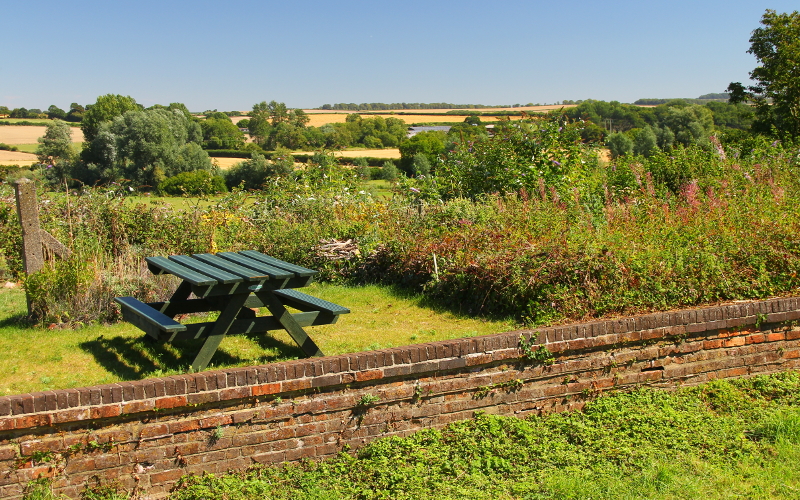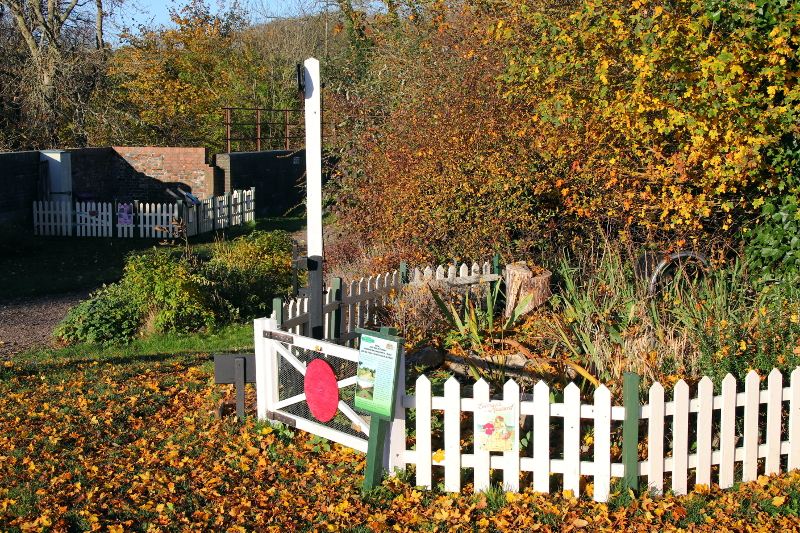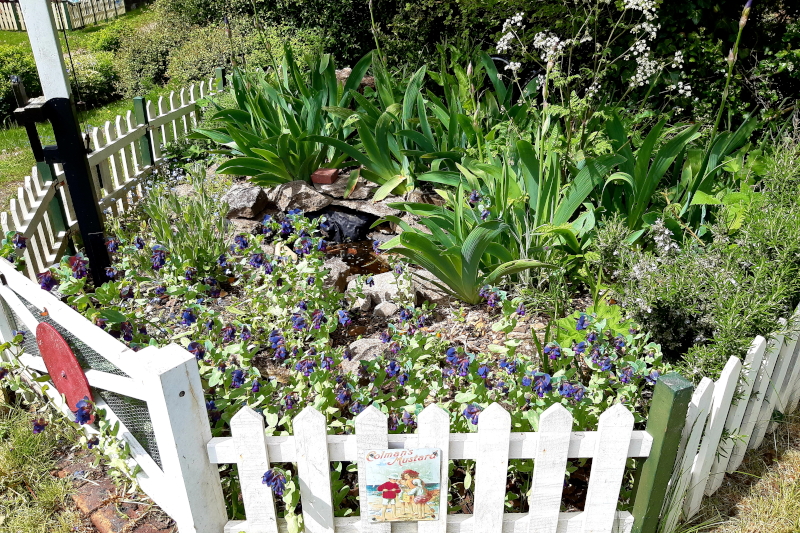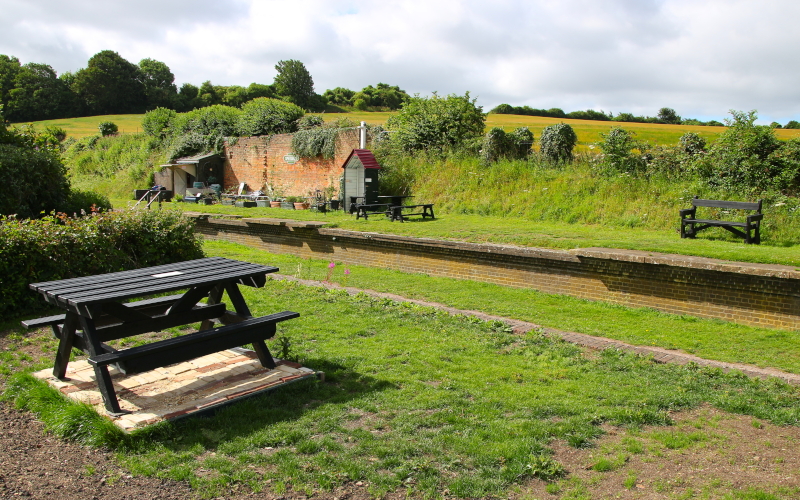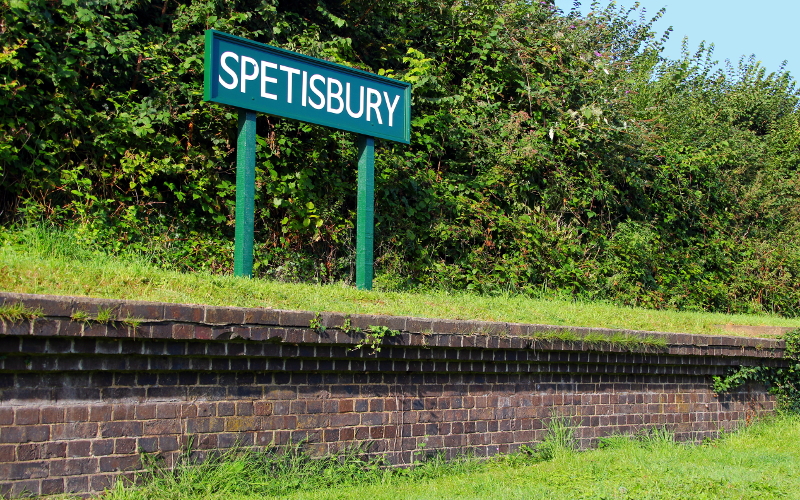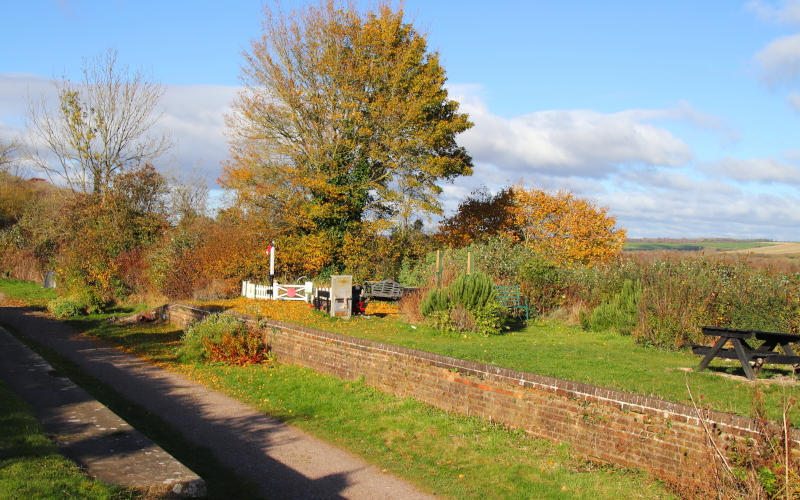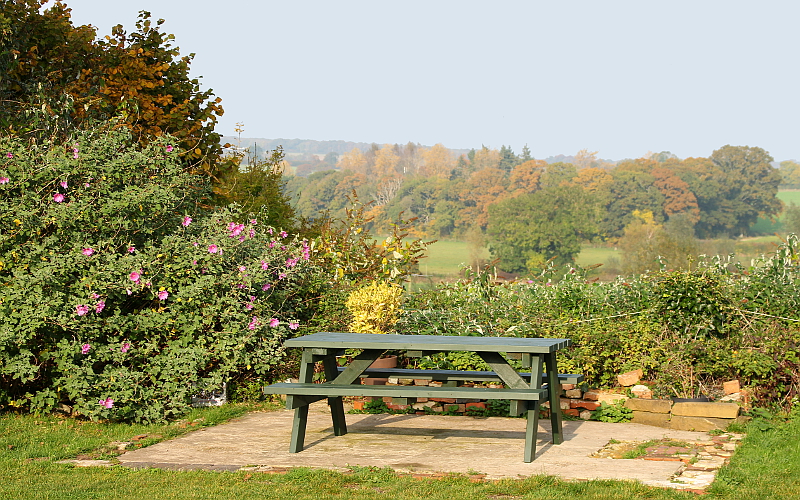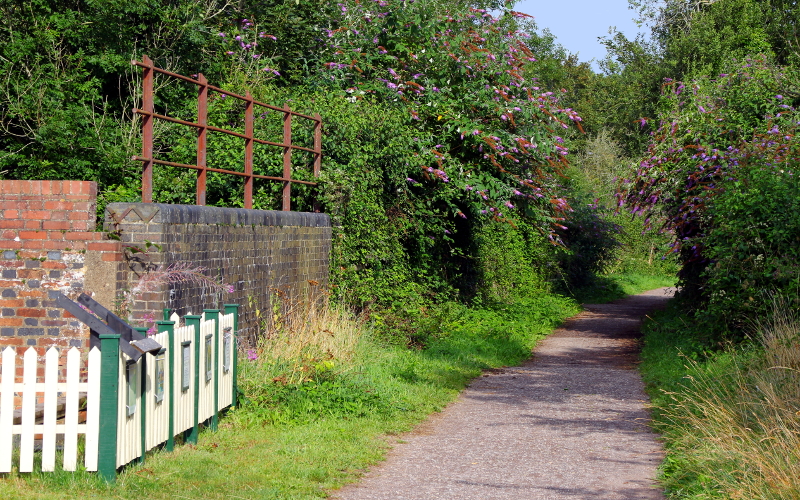Spetisbury station was opened by the Dorset Central Railway in 1860 and later became part of the famous Somerset & Dorset Railway. Until its closure in 1966, this important cross-country railway linked Poole and Bournemouth with Bath and the Bristol Channel coast. Read more about the history of the station.
The Spetisbury Station Project was formed in 2012. The abandoned station was at that time totally overgrown. The volunteers set to work clearing the site to reveal the foundations of the demolished buildings for the first time in decades. In the process, many railway artefacts were uncovered and these have been cleaned and preserved off-site. Vegetation has been cut back to open up the view across the Stour Valley and, thanks to much effort, the station has now been transformed into a pleasant open space. If you are interested in joining us as a volunteer, please click here.
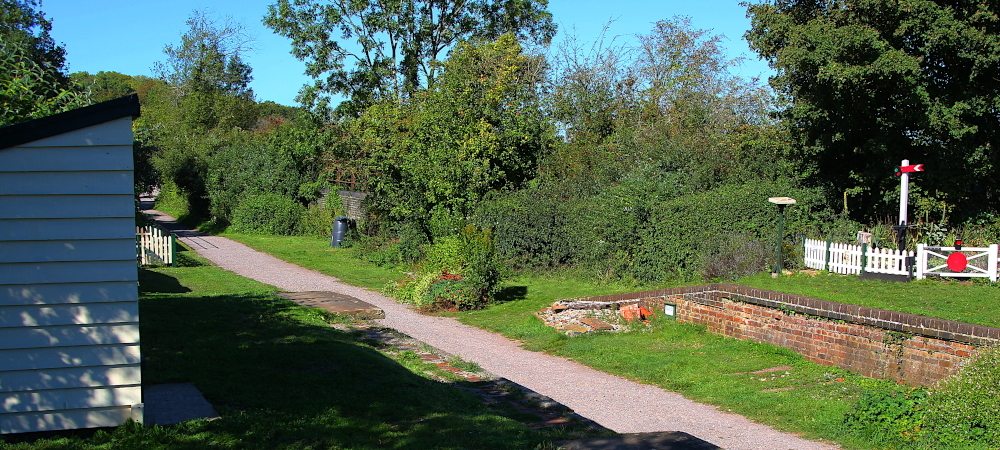
The station site is accessible to the public at any time, free of charge. Visitors can explore the remains of the former station within a landscaped rural setting featuring a wildlife pond and several different flower borders, and maybe enjoy a picnic overlooking the Stour Valley. There are several grassed areas with benches and picnic tables around the site, also a small shelter. The station is a perfect base to walk or cycle the North Dorset Trailway, which starts at Spetisbury and continues north as far as Sturminster Newton mostly along the old railway. To find the station, please click here.
This is what a few happy visitors have to say about us:
“The station is always attractive, it’s great to see it cared for. Keep up the great work.”
“I visited a few years ago and you’ve done a good job, keep up the good work well done you all.”
Visit our events page for a list of this year’s work parties and other special events.

The ‘down’ platform. Trains for Wimborne, Broadstone Junction, Poole and Bournemouth (West).
The ‘up’ platform. Trains for Blandford, Templecombe, Evercreech Junction (change for the Burnham-on-Sea, Bridgwater and Wells branches) and Bath (Green Park). View the remains of the station building and the foundations of the booking office and waiting rooms.
The signal box controlled the crossover points between the two lines as well as the signals. View the foundations of the signal box or visit the signal box webpage for more detailed information.
station wildlife
 The station is a real haven for wildlife. On the ‘down’ platform is a small pond featuring high and low water levels as a permanent water source for frogs and toads. There is also a bat box and a slow worm habitat. Bird boxes have been provided around the site and a small area of woodland, hawthorn and blackthorn bushes has been left undisturbed for nesting birds. Numerous species of wild flower including poppy, bluebell, speedwell, common mallow, comfrey and foxglove grow around the station, with planted flower beds attracting bees and butterflies. For this work the station has been awarded ‘Wildlife Friendly Garden’ status by the Dorset Wildlife Trust. Birds identified on site include hawks and kestrels, great spotted woodpeckers, tawny owls, sparrow hawks, nightingales and chaffinches. View our wildlife document for a full list of flora and fauna seen at the station.
The station is a real haven for wildlife. On the ‘down’ platform is a small pond featuring high and low water levels as a permanent water source for frogs and toads. There is also a bat box and a slow worm habitat. Bird boxes have been provided around the site and a small area of woodland, hawthorn and blackthorn bushes has been left undisturbed for nesting birds. Numerous species of wild flower including poppy, bluebell, speedwell, common mallow, comfrey and foxglove grow around the station, with planted flower beds attracting bees and butterflies. For this work the station has been awarded ‘Wildlife Friendly Garden’ status by the Dorset Wildlife Trust. Birds identified on site include hawks and kestrels, great spotted woodpeckers, tawny owls, sparrow hawks, nightingales and chaffinches. View our wildlife document for a full list of flora and fauna seen at the station.
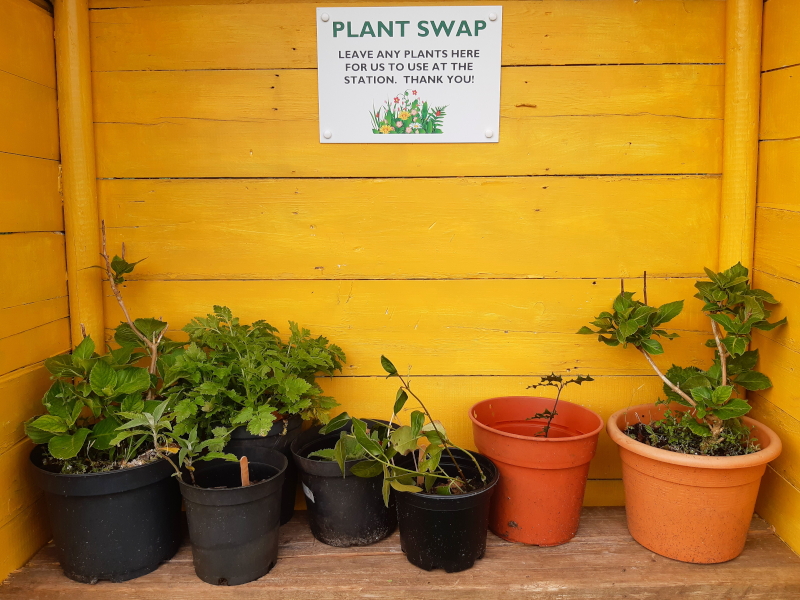 We also operate a Plant Swap. This can be found in the slightly wonky green and yellow hut, please leave any plants or cuttings there for us to use around the station, or swap for something else that takes your fancy. Every plant and flower at the station has been donated either by our green-fingered volunteers or members of the public.
We also operate a Plant Swap. This can be found in the slightly wonky green and yellow hut, please leave any plants or cuttings there for us to use around the station, or swap for something else that takes your fancy. Every plant and flower at the station has been donated either by our green-fingered volunteers or members of the public.
Visitors to the station site are advised to be careful of uneven platform edging and should not enter the building foundations due to loose masonry. Overnight camping, barbeques and fires are not permitted.


